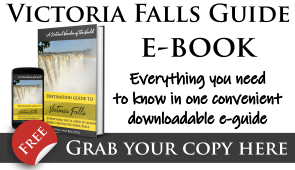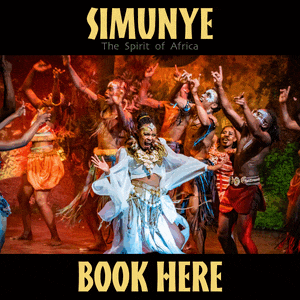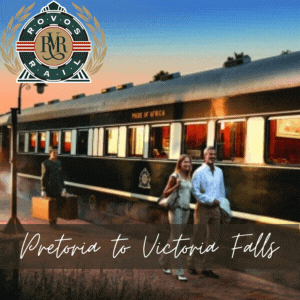Information on Zambia
Last update: 12 October 2024 Zambia's LanguagesThe official language of Zambia is English. The local languages are predominantly Bemba, Nyanja, Tonga, Luvale, Lunda, Kaonde and Lozi. In Livingstone near the border with Zimbabwe, the main language spoken there is Tonga, but in Lusaka, the main one is Nyanja and then Bemba. There are over 70 languages spoken in Zambia.
Communication and Power SupplyMost hotels and lodges in Zambia do provide internet service for their clients, and although the speed is not up to international standards, it is very much workable. There are internet cafes and wireless hotspots scattered around towns and cities. Mobile phone service tends to be expensive (most especially if you are roaming), but there are cheaper alternatives such as text messaging which is reliable even in some remote areas of the country. Zambia's international calling code is +260. Plugs in Zambia have a 220 V supply, and they use 3 pin square (Type G) and round ( Type D), as well as 2 pin adapters (Type C). Weather and ClimateFor a tropical region, Zambia's climate is generally quite comfortable, with the exception of the Zambezi and Luangwa valleys which tend to get excessively hot. The cool and dry season is between the months of May and August. During this time, temperatures are at their lowest, some places even get night frost. Average maximum temperatures vary between 15°C and 27°C (59°F and 80.6°F). Between September and November, the hot and dry season occurs. This is when temperatures reach their highest, and October tends to be the hottest month. The maximum temperatures range from 27°C to 35°C (80.6°F to 95°C). The warm and wet/rainy season is between November/December and April. In the Zambezi and Luangwa valleys, the humidity is highest during this season. Thundershowers and storms are the norm in this season, followed by bright sunny skies. Rain falls the most in the northern regions - about 1250mm per year. As we move south, annual rainfall decreases to about 750mm per year. Further south of Lusaka, rainfall averages 500 to 750mm per year. The table below shows annual rainfall in different parts of Zambia, as well as minimum and maximum temperatures:
Information on Zambia's CurrencyThe Zambian Kwacha (ZMK) is the currency used in Zambia. While some places will accept foreign currency, services like taxi's will need you to use Kwachas instead. Automatic Teller Machines (ATMs) can be found around cities and towns. Some will accept Visa, MasterCard and Maestro cards, and will dispense Kwachas, and not foreign currency. It is advisable to travel with a bit of cash in case the ATMs are not working. You can use the registered foreign exchange bureau's to change your money into local currency. How to Get to ZambiaEntry RequirementsAt the different ports of entry, each visitor is required to have a passport with at least 2 blank pages, and one that is valid for at least 6 months. Depending on the country of origin, you may be required to get a visa upon entry, or before arriving to Zambia. See our visa page for more information on Zambia's visa requirements. There are additional entry requirements for those who wish to drive into Zambia (more information below). Zambia no longer have Covid-19 entry requirements. See our Zambia Covid-19 Regulations page. By AirZambia does not have a national airline, but there are several international and local airlines that fly to the international airports of Lusaka, Livingstone and Ndola. Airlines that fly to Lusaka include Emirates (from Dubai and Harare), South African Airways (from Durban and Johannesburg), Kenya Airways (from Nairobi and Harare), Air Botswana (from Gaborone), Air Malawi and Proflight (from Lilongwe), Egypt Air (from Cairo), Ethiopian Airlines (from Addis Ababa), and TAAG Angola Airlines (from Luanda). Some airlines service the region of southern and eastern Africa, while others like Emirates fly to and from Dubai. Airlines that fly into Livingstone include SA Airlink (from Johannesburg and Nelspruit), Kenya Airways (from Nairobi), and Proflight (from Lusaka). By RoadThe best overland driving routes by which to enter Zambia are through Zimbabwe and Botswana. The border crossings between Zambia and its neighbouring countries are numerous and generally open between 6am and 6pm, with the exception of the Victoria Falls Border which closes at 10pm. See the table below for information on Zambia's border openings and closings:
*Open 24 hours for light motor vehicles Driving into ZambiaWhen travelling by road to Zambia, you will need: By RailThe Tazara (Tanzania Zambia Railway Authority) offers a passenger train service that operates between Tanzania and Zambia. The Mukuba Express leaves every Tuesday from New Kapiri Mposhi in Zambia at 16h00 and the Kilimanjaro Train leaves Dar es Salaam at 15h50 on the same day. The complete journey takes about 2 days (46 hours), and costs about US$50. The ordinary trains leave every Friday afternoon at 13h50 and 14h00 from Dar es Salaam and New Kapiri Mposhi (about 200 kilometres from Lusaka), respectively. These trains take a much longer time (about 50 hours), and costs about US$40. You will find the timetables from and to Dar es Salaam below:
The trains are on high demand, so it is important to book your tickets at least 2 weeks in advance to avoid disappointment. Visit Tazara's website for detailed information, schedules and rates. To complete a journey by rail onto Lusaka or Livingstone, there are local train services (information in the next section). However, be aware that the total journey could take 3 days at the most, and would involve waiting a few hours between train journeys. Getting Around in ZambiaZambia By RoadDriving in Zambia is done on the left hand side of the road. About 10,000 kilometres of Zambia's roads are tarred, while gravel road makes up another 8,000 kilometres. When driving in Zambia, you must carry your drivers' license and vehicle documents with you at all times - it is very possible to encounter police road blocks along the way, and they will need to see your documents. Drivers' licenses from other SADC countries can be used, otherwise licenses from other countries are not valid for driving in Zambia - for this an International Drivers License is required. Distances between Zambia's towns and cities Mazhandu Bus Company offers daily service between Lusaka and Livingstone on luxury vehicles. Zambia By AirBetween Livingstone and Lusaka, Proflight has affordable scheduled flights which run daily. Proflight also offers scheduled services between Mfuwe, Ndola, Solwezi, Chipata and Lower Zambezi. Chartered flights are usually expensive, but larger group bookings may end up giving you good value for your money. They can be arranged through Proflight's ProCharter Service. There are other air charter companies such as Sky Trails, Corporate Air, Royal Air Charters, Staravia Air Charters, Ngwazi Air Charters, ProCharter. Zambia By RailThe rail service in Zambia is, unfortunately, not well maintained. It is quite cheap, but expect the very basic of facilities, very long journeys, and make sure that you travel with your own food and water. The table below shows the train service between Livingstone, Lusaka and Kitwe which is in the Copperbelt Province:
To find out more and make your bookings, contact the head office for Zambia Railways on +260 (0) 215223074. If you want to travel overland but don't want the long wait, it is better to use the bus service, or better yet, self drive. Otherwise, for leisurely travel on a very tight budget, the train will do alright.
Return from Information on Zambia page to our home page |
|
|||||||||||||||||||||||||||||||||||||||||||||||||||||||||||||||||||||||||||||||||||||||||||||||||||||||||||||||||||||||||||||||||||||||||||||||||||||||||||||||||||||||||||||||||||||||||||||||||||||||||||||||||||||||||||||||||||||||
|
|
||||||||||||||||||||||||||||||||||||||||||||||||||||||||||||||||||||||||||||||||||||||||||||||||||||||||||||||||||||||||||||||||||||||||||||||||||||||||||||||||||||||||||||||||||||||||||||||||||||||||||||||||||||||||||||||||||||||||
|
|
||||||||||||||||||||||||||||||||||||||||||||||||||||||||||||||||||||||||||||||||||||||||||||||||||||||||||||||||||||||||||||||||||||||||||||||||||||||||||||||||||||||||||||||||||||||||||||||||||||||||||||||||||||||||||||||||||||||||
|
| ||||||||||||||||||||||||||||||||||||||||||||||||||||||||||||||||||||||||||||||||||||||||||||||||||||||||||||||||||||||||||||||||||||||||||||||||||||||||||||||||||||||||||||||||||||||||||||||||||||||||||||||||||||||||||||||||||||||||




